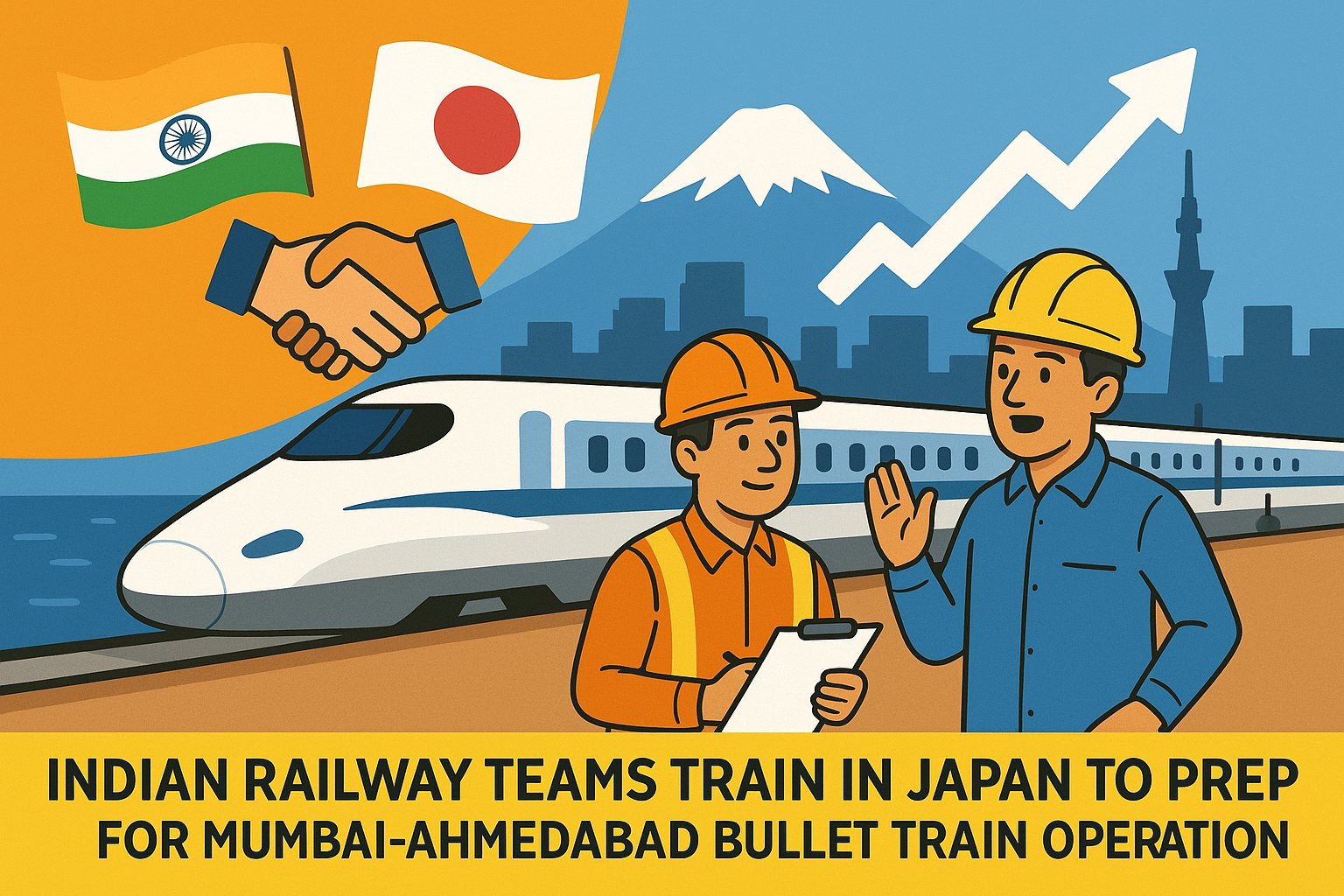
Indian Railway Teams Train in Japan to Prepare for Mumbai-Ahmedabad Bullet Train Operations
India’s Leap Towards High-Speed Rail
India’s ambitious Mumbai-Ahmedabad bullet train project is steadily moving closer to reality, with a major focus now on human resource readiness. In line with this, key personnel — from loco pilots to operations control staff — are undergoing intensive training in Japan, the home of the world-renowned Shinkansen high-speed rail system.
Railway Minister Ashwini Vaishnaw confirmed the development, stressing that operational readiness is as critical as infrastructure development. “Operating a bullet train demands highly specialized skills. To ensure flawless execution, we’ve already sent our teams to Japan for intensive, hands-on training,” he said.
Learning from the Best: Shinkansen Model
The decision to train Indian teams in Japan reflects India’s intent to adopt global best practices in high-speed rail management. Japan’s Shinkansen network, operational since 1964, is admired for its unparalleled safety record, punctuality, and technological sophistication.
Indian trainees are being exposed to a wide range of modules, including:
- Train operations: Mastering high-speed driving techniques.
- Safety protocols: Managing emergencies and adhering to strict safety norms.
- Signaling systems: Understanding cutting-edge communication and signaling frameworks.
- Maintenance drills: Learning predictive and preventive maintenance techniques to ensure zero downtime.
- Simulation training: Using advanced simulators that mimic real-time operating conditions.
This hands-on approach ensures that when India’s first bullet train rolls out, it will be managed by personnel who have been trained to meet world-class standards.
India-Japan Collaboration Beyond Technology
The training initiative is a core element of the broader India-Japan High-Speed Rail partnership, which goes beyond technology transfer and infrastructure support. It emphasizes capacity building through skill development, ensuring that Indian teams are self-reliant in running and maintaining the system.
Japanese experts, with decades of experience, are working directly with Indian crews to instill the discipline, precision, and work culture that have made Shinkansen a global benchmark.
This collaboration is also expected to create knowledge spillovers for India’s domestic railway sector, paving the way for future high-speed corridors in other parts of the country.
A Vision for Safer, Faster Travel
The Mumbai-Ahmedabad bullet train project is not just about speed — it is about transforming the passenger experience in India. By cutting the travel time between the two cities from 6–7 hours to just over 2 hours, the project will redefine long-distance commuting.
Safety remains at the heart of this transformation. The Shinkansen has a zero-fatality record in its six decades of operations, and India is keen to replicate this benchmark. The training modules, therefore, emphasize fail-safe design, disaster preparedness, and robust signaling systems to ensure that passenger confidence remains high from day one.
Timeline and Future Prospects
The bullet train corridor is targeted to begin its first phase of operations in 2027. While civil construction and track laying continue in India, the simultaneous training program in Japan ensures that the human infrastructure is ready well before the inaugural run.
The government envisions the Mumbai-Ahmedabad project as the starting point of a nationwide high-speed rail network, with future extensions planned towards Delhi and southern states. The skills currently being developed will form the backbone of India’s long-term high-speed rail ecosystem.
What It Means for India
For India, this project is more than just an engineering marvel. It represents:
- Global integration: Adopting international best practices in rail technology.
- Skill development: Building a pool of highly trained railway professionals.
- Economic impact: Cutting travel time will boost business, tourism, and regional integration.
- Cultural exchange: Strengthening India-Japan ties through sustained cooperation.
Conclusion
The Mumbai-Ahmedabad bullet train is on track to become India’s first step into the world of ultra-modern transport systems. While the sleek trains and futuristic stations may grab headlines, it is the rigorous training of Indian teams in Japan that will ultimately determine the project’s success.
By learning from the Shinkansen’s precision and safety ethos, India is preparing not just to run a train, but to set a new standard for mobility in the 21st century.




